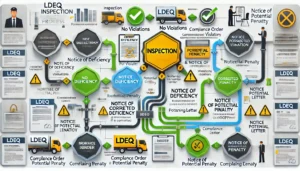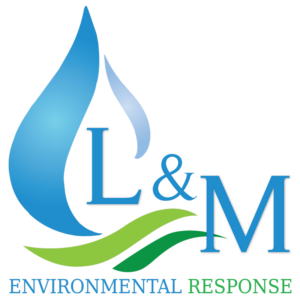The Enforcement Process
If your facility has been subject to the Louisiana Department of Environment Quality (LDEQ) enforcement, you’re likely wondering what comes next. L&M’s quick guide will help you navigate the process and understand your responsibilities as the facility owner or operator.
The enforcement process can often seem overwhelming and difficult to navigate. It might feel like documents keep getting reissued and there’s no clear resolution in sight.

However, once you understand the steps involved, the path from initial discovery of deficiencies to full compliance becomes clear. The process includes multiple opportunities to address and remedy issues. L&M aims to demystify this journey so our clients are informed, prepared, and equipped to achieve compliance with minimal financial burden.
Typically, the enforcement process begins with a scheduled compliance inspection or an inspection resulting from an incident or complaint. A Notice of Deficiency is issued if the regional inspector identifies areas of concern. If these concerns remain unaddressed, the case escalates to Enforcement, in which case LDEQ will then issue a Warning Letter. This letter serves as both a notice that formal enforcement has begun and an opportunity to resolve any outstanding deficiencies before more stringent actions are taken. No matter where you are in the process, addressing concerns proactively is always beneficial.

LDEQ uses several types of enforcement actions depending on the severity of violations and the environmental impact. These can include Expedited Penalty Agreements, Compliance Orders, Notices of Potential Penalty, and Settlement Agreements. In 2023, LDEQ issued 737 separate enforcement actions, and 508 through September 2024 alone (LDEQ). While these numbers may seem daunting, LDEQ will work with facilities to remedy issues. Understanding how LDEQ assesses the severity of violations, potential signs of recalcitrance, and the factors contributing to the financial costs of non-compliance is essential. By being informed, you can better navigate the process and reduce the risks of costly penalties.

The Penalty Matrix
While seemingly straightforward, the Penalty Matrix used by LDEQ can be deceptively complex. This tool helps quantify the penalty for noncompliance with state and federal environmental laws by assessing fines based on two key factors: the degree of risk to human health or property, and the nature and severity of the offense. Through the consideration of these factors, the matrix ensures penalties are proportional to the violation, guiding the department’s response.
As shown below, the penalty matrix categorizes violations based on risk and severity with a defined range of possible fines. The matrix helps ensure that penalties are proportionate to the violation’s impact, with more severe or higher-risk offenses resulting in larger fines. It also provides a consistent framework for determining penalties while allowing flexibility for unique circumstances.

The LDEQ uses specific criteria to grade each factor as Major, Moderate, or Minor. The Definitions for the degree of risk to human health or property are as follows:
- Major Risk: A violation that has resulted in the permanent loss of an environmental resource, the violation has produced a high volume or frequent occurrence of concentrated pollution, and the discharge of pollutants from such a violation directly harms sensitive environments. This could also mean that an offense resulted in the permanent loss of an environmental resource (LAC 33:1.705.A.1).
- Moderate Risk: A violation that has the potential to create a measurable impact on the environment or public health. Such a violation may be expected to have a detrimental effect on human health or the environment under certain conditions (LAC 33:1.705.A.1).
- Minor Risk: A violation that poses little to no measurable harm to the environment or public health. These are often one-time incidents with no significant negative effects. Administrative violations usually fall into this category (LAC 33:1.705.A.1).
The nature and gravity of the offense is also ranked as Major, Moderate, or Minor:
- Major Offenses: These are serious violations that defeat the purpose of environmental regulations or permit requirements. They involve significant noncompliance with minimal implementation of required measures (LAC 33:1.705.A.2).
- Moderate Offenses: These substantially undermine environmental requirements, but some compliance efforts are still present (LAC 33:1.705.A.2).
- Minor Offenses: These involve minor deviations from the intent of regulations and violators have been overall successful in implementing the provided requirements (LAC 33:1.705.A.2).
Final Penalty Calculations
While the degree of risk to human health or property and the nature and gravity of the offense are central to the penalty matrix, they are just two of nine factors used to determine civil penalties. According to LAC § 33:1.703.A, the additional violator-specific factors considered include:
- The history of previous violations or repeated noncompliance
- The gross revenues generated by the respondent
- The degree of culpability, stubbornness, defiance, or indifference to regulations or orders
- Whether the person charged made reasonable attempts to mitigate the damages caused by the violation
- Whether the violation was reported promptly or concealed
- The financial benefits gained through non-compliance
- The costs of enforcement, including staff time, equipment use, hearing records, and expert assistance
When adjusting penalties within the matrix, LDEQ primarily refers to the first five of these factors, allowing for flexibility based on the unique circumstances of each violation. The violator-specific factor is a percentage adjustment and can make a large difference in the final assessed cost.
Case Study: Shifty Sands Construction Co.
Take for example a fictitious construction company Shifty Sands Construction Co. A neighbor noticed a strong smell of sewer and notified LDEQ which inspected the site in 2020. An LDEQ Inspector surveyed the area and observed untreated sanitary wastewater overflowing from a lift station belonging to Shifty Sands. The LDEQ Inspector reviewed records and saw this same lift station had repetitive malfunctions over the previous 2 years. Shifty Sands told the inspector that efforts were underway to remediate the issue, however, a third inspection found that Sanitary Sewer Overflow (SSO) was still occurring at the lift station, and the same was true during a fourth inspection in 2021.
LDEQ then performed a full inspection of the entire facility and uncovered repeated evidence of a failure to maintain various levees properly, other lift stations, and the chlorine contact chamber between 2020 and 2021. Furthermore, none of these issues were submitted to LDEQ along with the facility’s discharge monitoring reports (DMRs). Each failure to maintain the equipment, as well as failure to submit notification becomes an individual violation. As Shifty Sands did not address the violations in the inspection or the Warning Letter, LDEQ issued a Consolidated Compliance Order & Notice of Potential Penalty in 2022 which outlined exactly what step Shifty Sands must take in a specific period along with a $19,000 fine.
In this case, LDEQ determined that the violations for the First Penalty Event, associated with SSO and the malfunctioning lift exhibited a Minor Degree of Risk to Human Health or Property, whereas the Nature and Gravity of the Violation were moderate due to the duration of SSOs lasting over a year. Given only these two factors, the fine according to the penalty matrix should be between $500 and $1,500. However, upon consideration of violation-specific factors, LDEQ took into account the repeated instances of non-compliance and added 10% to the fine for Penalty Event 1, as well as an additional 20% for the degree of culpability, recalcitrance, defiance, or indifference to regulations or orders, and 10% for failing to report the SSO to LDEQ. In total, the fine for Penalty Event One was $1,800.
Eight additional penalty events were cited, resulting in the $19,000 cumulative fine. Each fine for the events was determined first by comparing the degree of risk to human health or property and the nature and severity of the offense to the penalty matrix, and by adjusting the fines in accordance with violation-specific factors. Most notably, Penalty Events 5 and 8 were assessed an additional $300 fine for benefiting monetarily from the violation. LDEQ explained that for Penalty Event 8, by not submitting DMRs, the facility had saved $300, and therefore included that benefit in their fine.
The fictional case of Shifty Sands Construction demonstrates how penalties can snowball quickly if not promptly and fully addressed. What began as a small penalty of only a few hundred dollars quickly escalated to $19,000 in fines due to continued non-compliance and delays, not to mention the lost time and resources spent resolving the issues over a two-year period.
Key Takeaways
Navigating LDEQ enforcement can be challenging, but these takeaways can help guide you through the process:
- Address Violations Promptly and Safely
Resolve any areas of concern or violations as quickly and safely as possible to minimize potential penalties. - Foster a Cooperative Relationship with LDEQ
LDEQ is open to working with facilities to achieve compliance. Building a cooperative relationship can go a long way. - Document Corrective Actions Thoroughly
Remember, corrective actions aren’t valid unless they are documented. Keep all related records organized and readily accessible. - Understand Penalty Risk Factors
Be aware of factors that increase penalty risks, especially those related to repeat violations.


